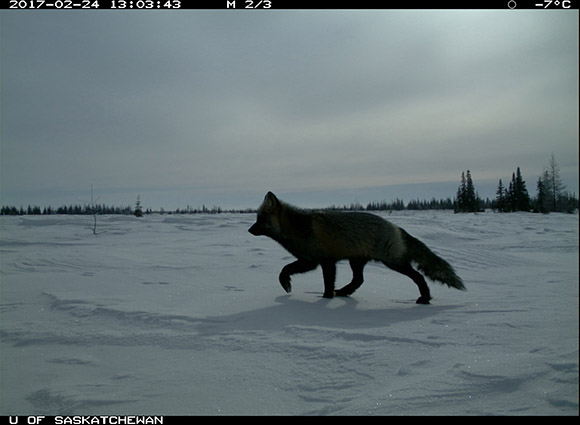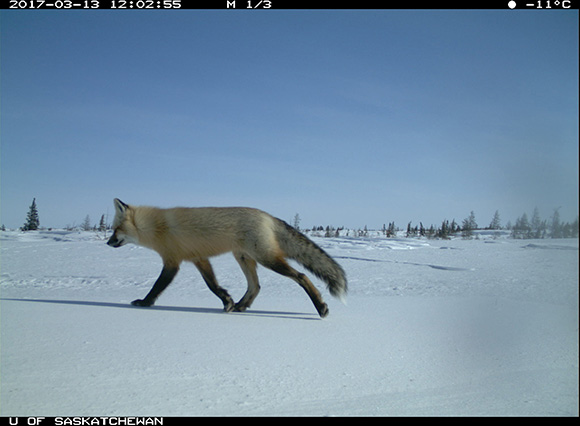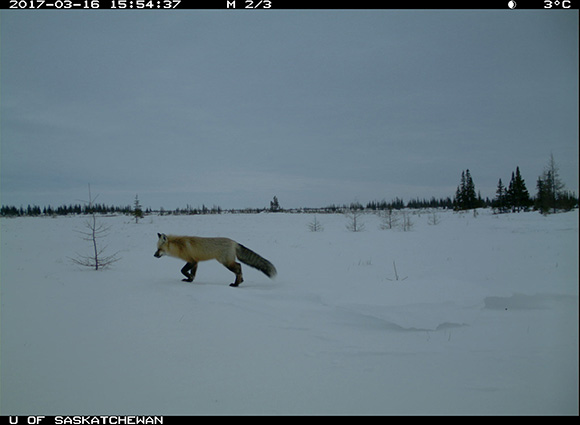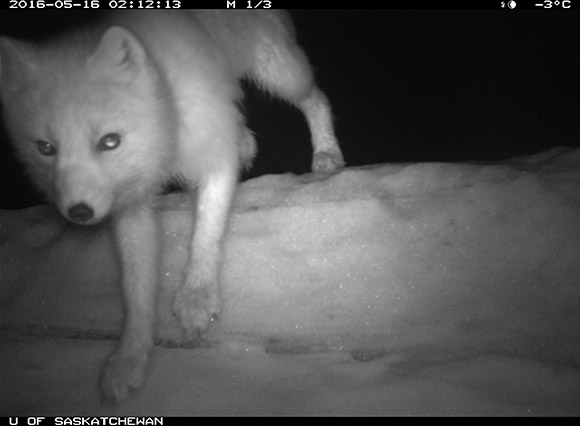A tale of two foxes
Wapusk National Park
Wapusk National Park is located where the boreal forest transitions to the Arctic tundra. Due to this meeting of ecosystems, both boreal and sub-arctic species are found in Wapusk.
A great example of this is range crossover is between the red and arctic fox species.
The red fox (Vulpes vulpes), a more southerly species and adapted for warmer climates, seems to have expanded its range to the north. The red fox encounters and competes with the Arctic fox (Vulpes lagopus), its smaller, cold-climate-adapted cousin.The red fox is larger and heavier, with a longer snout and ears than its arctic counterpart. While both species have a varied diet and will eat almost anything (rodents, berries, geese, eggs, carrion) the red fox is a generalist, meaning that it can tolerate a wider range of environmental conditions.
The Arctic fox, on the other hand, is highly specialized. It is adapted for high winds and low temperatures. It has a very thick winter coat and its smaller ears and nose allow it to conserve body heat during the harsh winters by minimizing wind exposure.
As the climate in the region warms, the red fox appears to be becoming more abundant in Wapusk and so may push the Arctic fox from the southern edges of its current range.
Here we have pictured arctic and red foxes caught on remote cameras during the winter of 2016-17.
Wapusk National Park is located where the boreal forest transitions to the Arctic tundra. Due to this meeting of ecosystems, both boreal and sub-arctic species are found in Wapusk.
A great example of this is range crossover is between the red and arctic fox species.
The red fox (Vulpes vulpes), a more southerly species and adapted for warmer climates, seems to have expanded its range to the north. The red fox encounters and competes with the Arctic fox (Vulpes lagopus), its smaller, cold-climate-adapted cousin.The red fox is larger and heavier, with a longer snout and ears than its arctic counterpart. While both species have a varied diet and will eat almost anything (rodents, berries, geese, eggs, carrion) the red fox is a generalist, meaning that it can tolerate a wider range of environmental conditions.
The Arctic fox, on the other hand, is highly specialized. It is adapted for high winds and low temperatures. It has a very thick winter coat and its smaller ears and nose allow it to conserve body heat during the harsh winters by minimizing wind exposure.
As the climate in the region warms, the red fox appears to be becoming more abundant in Wapusk and so may push the Arctic fox from the southern edges of its current range.
Here we have pictured arctic and red foxes caught on remote cameras during the winter of 2016-17.
- Date modified :




